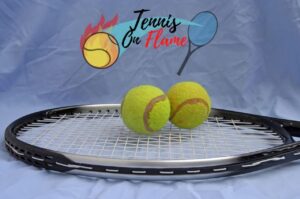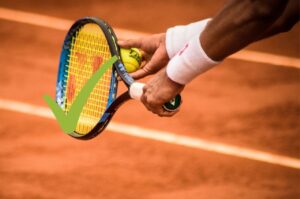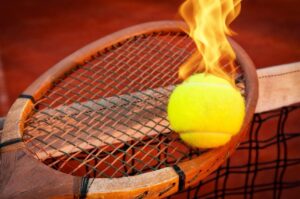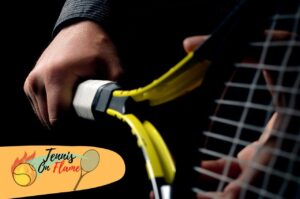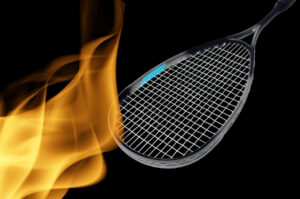There are a lot of factors to consider when you’re purchasing a tennis racket. But did you know that there are also fake tennis rackets on the market?
You want to find one that is the right weight and size for your body, and that will give you the best chance of winning your next match.
It’s true! In this guide, we will teach you how to spot a fake tennis racquet. We’ll cover everything from materials used in construction to counterfeit logos.
Stay safe and purchase only authentic tennis racquets!
Which Materials do I need to look for when I buy a racket?
The vast majority of tennis racquets are made from graphite, although some cheaper models may be constructed from aluminum.
If you’re looking to buy a high-end tennis racquet, make sure that it is made from graphite.
Counterfeiters will often try to save money by using cheap materials, so this is one way to spot a fake.
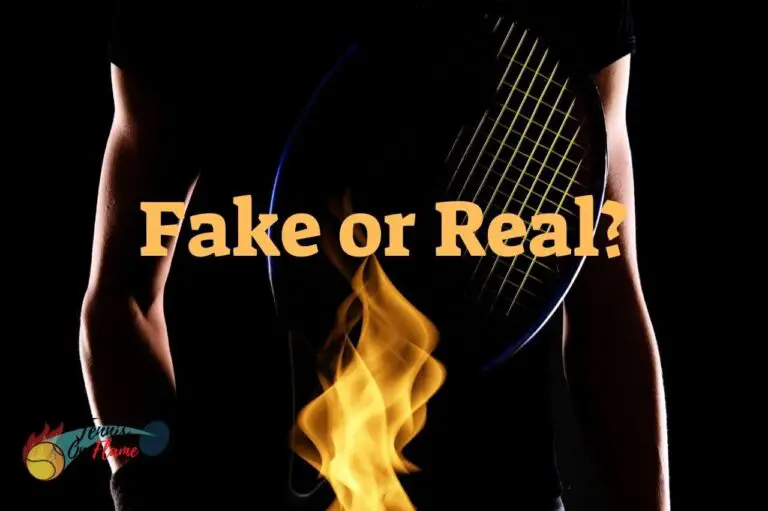
What should I look for in the construction of the racket?
In addition to materials, you also want to pay attention to the construction of the racket.
A well-constructed racket will have a smooth finish and even seams.
If you see any irregularities in the construction, it is likely a counterfeit racket.
Be especially careful if you’re considering buying a used tennis racquet – it may be a fake!
What should I look for in the logo?
One of the easiest ways to spot a fake tennis racquet is by looking at the logo.
Many counterfeiters will try to save money by using a fake or counterfeit logo.
If the logo on the racket looks different from other logos you’ve seen, it’s probably a fake.
What should I look for in the Serial Number?
Check the Serial Number. All real tennis racquets have a unique serial number.
If the racket you’re looking at doesn’t have a serial number, it’s probably fake.
What should I look for in the butt cap?
Check the color of the butt cap. Real tennis racquets have a black butt cap.
If the butt cap is a different color, it’s probably fake.
What should I look for in the grip?
Check the grip size and type. All real tennis racquets have a standard grip size and type.
If the racket you’re looking at has a different grip size or type, it’s probably fake.
If you have a hard peeling off the hologram sticker, does it mean that is a fake racket?
If you have difficulty peeling off the hologram sticker, the racket is likely fake.
Hologram stickers are a common feature of authentic tennis racquets, so counterfeiters often try to replicate them.
However, they are not always successful in doing so.
If you can’t easily peel off the hologram sticker, it’s likely a fake.
What about the price of the rackets?
Counterfeiters often try to sell their fake tennis racquets at a discount to entice buyers.
Don’t fall for it! If the price seems too good to be true, it’s probably because the racket is fake.
What about the country of production?
Finally, take a look at the country of production. Most authentic tennis racquets are made in either China or Japan.
If the racket you’re looking at is made in another country, it’s more likely to be fake.
What should I do if I think I’ve found a fake racket?
If you think you may have found a fake tennis racquet, the best thing to do is to contact the manufacturer.
They will be able to tell you for sure if the racket is fake or not.
Stay safe and only purchase authentic tennis racquets!
In conclusion
There are a lot of factors to consider when purchasing a tennis racquet, but one of the most important is ensuring that you’re getting an authentic product.
In this guide, we have taught you how to spot a fake tennis racquet.
We’ve covered everything :
*Materials – graphite is the most common material used in construction.
*Construction – look for smooth seams and a well-constructed racket.
*Logo – many counterfeiters will try to save money by using a fake logo.
*Serial number – all real tennis racquets have a unique serial number.
*Butt cap – real tennis racquets have a black butt cap.
*Grip – all real tennis racquets have a standard grip size and type.
*Price – if the price seems too good to be true, it’s probably because the racket is fake.
*Country of production- most authentic tennis racquets are made in either China or Japan.
If the racket you want to buy is made in another country, it’s more likely to be fake.
If you’re ever unsure about whether or not a racket is fake, the best thing to do is to contact the manufacturer.
Now that you know how to spot fake tennis rackets, you can be sure that you’re getting the real deal when you make your next purchase.
Stay safe and only purchase authentic tennis rackets!
Thanks for reading. : )



